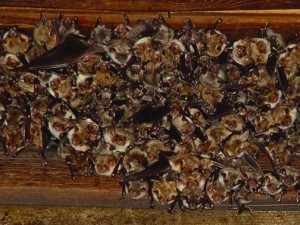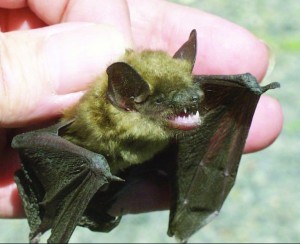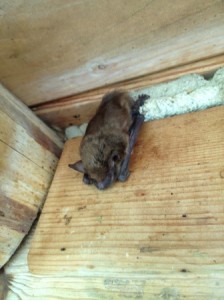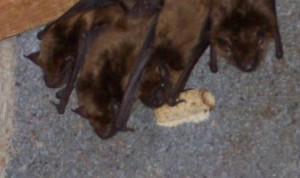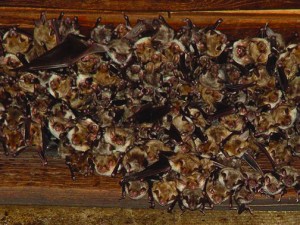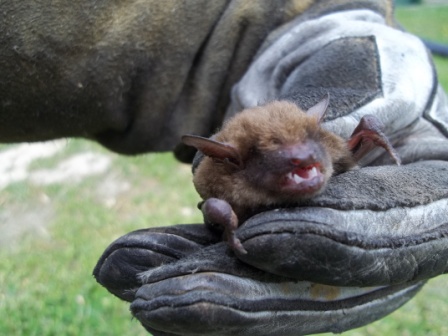Tri-State Wildlife Management works year round helping people in the Northern Kentucky Cincinnati area who are experiencing bat issues with their home or business. Customers often ask, “Why can’t bats be removed or excluded during the summer?” First off this statement is not entirely true. If a customer calls with a bat in their living space, we are permitted to remove the bat from the home and either release it outside, or in the case that it may have been in contact with a person and there is a risk of exposure to zoonotic diseases the bat could be submitted to the health department for rabies testing. With that being said, bats roosting within a structure can not be excluded from a structure from mid May – Mid August because of the presence of pups.
Local bats begin gathering in maternity colonies in late spring and usually give birth to 1-2 pups any time from mid May through mid July. During this time the mother will leave the colony at night to feed but return to nurse their young for the first three weeks of their life. After this time the pups will learn to fly and begin leaving at dusk to feed on insects. For this reason no one is permitted to exclude bats while young are still unable to fly. If a mother bat is unable to access a structure to get to her nursing pup she will exhaust all efforts to try to enter the structure. This includes attempting to access briefly opened doors and windows. In addition, leaving a flightless pup without access to its food source, its mother’s milk, is inhumane and would result in the pups death. Lastly, numerous bats are listed on state and federal endangered species lists, making it illegal to cause them harm and death, which a summer time exclusion would inherently do.
Although we are unable to exclude bats during this time, Tri State Wildlife is permitted to begin the process, so that exclusion can take place as soon as the black out period is lifted. Our technicians will perform a thorough inspection of the structure, identifying all current and potential entry points. We can then begin preliminary sealing of the home, addressing all areas of potential future entry while still permitting the bats to access their current entry points. In addition, we can help identify at risk areas in the home that can reduce the likely hood of bats entering the living space of a home, for example blocking off knee wall and attic access.
If you are experiencing a bat issue in your home, let us begin the process of remedying you issue today.

